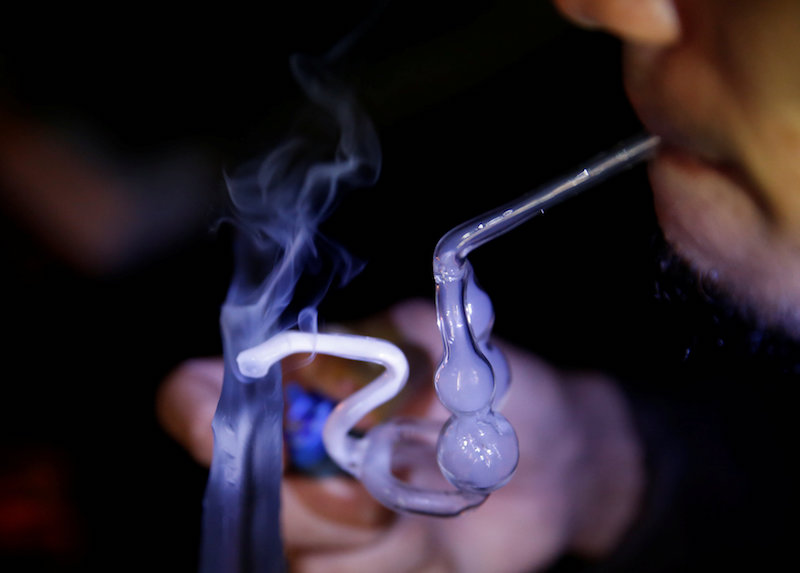KUALA LUMPUR, June 10 — In 2010, researchers from the University of Malaya’s Centre of Addiction Sciences took a bold step to run a methadone treatment clinic for heroin addicts from the Ar-Rahman mosque here in Lembah Pantai.
Two years later, the Ar-Rahman project drew worldwide attention not so much for its success in reducing addiction, but because it was the first methadone programme to operate from a mosque.
In a Muslim-majority country long taught to associate drug abuse with criminal behaviour, this was no small feat.
Later this month, three mosques in Penang are set to run — according to Permatang Pauh MP Nurul Izzah Anwar — what will be the world’s first opioid addiction treatment clinics to use naltrexone, a new drug to treat various types of opioid addiction, next to methadone.
The new programme, pending approval from the Ministry of Health, will be a test case to evaluate the effectiveness of both drugs in treating multiple forms of opioid dependency, said the PKR leader who also oversaw the Ar-Rahman mosque project as the Lembah Pantai MP then.
But given the drug is new, naltrexone will only be dispensed at MoH-approved facilities, in this case being a single targeted clinic “nearby” one of the three mosques.
“We will be reintroducing the programme in Penang,” Nurul Izzah told Malay Mail on Monday.
“So Permatang Pauh will be home to the first ever global study comparing between methadone and naltrexone.”
Like the Ar-Rahman project, which was discontinued due to funding shortage, the decision to use mosques as methadone and naltrexone distribution centres was a conscious move meant to lend religious credence to efforts to de-stigmatise drug addiction.
The end goal, Nurul said, has always been to decriminalise users. But she is wary that calling for outright decriminalisation at a time when society at large remains fearful of addicts could backfire and stall progress.
“I think if you ram up decriminalisation now you’ll face horrid backlash,” the three-term MP said.
“Start with harm reduction... once community awareness increases, it’s easier to push for decriminalisation.”
Malaysia’s policy on illicit substances has changed little since it took on the zero-tolerance approach made fashionable by the United States’ “war on drugs” in the late 70s, one that deemed punitive laws as the best answer to the heroin epidemic at the time.
This meant criminalising addicts and users as a means to suppress demand. Until today, anyone caught in possession of illicit substances could face jail time even if the amounts are negligible and the drugs meant for personal use.
There were also reported cases of users tried and convicted for trafficking, an offence that once carried a mandatory death sentence. The mandatory death penalty for drug offences was removed by the then-Barisan Nasional government in 2017, but judges can only exercise limited discretion to impose life imprisonment for drug trafficking under certain conditions.
Datuk Dr Adeeba Kamarulzaman, a professor on infectious disease at the University of Malaya and an expert on addiction response treatment, said there was overwhelming proof that incarceration yields little effect in combating substance abuse.
Instead, the number of repeat drug offenders in jail indicated the complete opposite: that the harsh conditions within these institutions only intensified their dependence.
“They tend to relapse... or in many cases they become worse because they find this new network,” Dr Adeeba told Malay Mail.
“So they learn to do other harder drugs.”
Dr Adeeba and Dr Rusdi Abd. Rashid, the chief coordinator of the Ar-Rahman programme, will play the same role to oversee the methadone clinics in Penang.
Malaysia introduced a nationwide government-financed methadone substitution programme to treat heroin addiction only in 2005, prompted by the alarming spread of HIV among intravenous drug users at the time.
Prior to that, heroin addicts were either sent to prison or government rehabilitation centres, but testimonies from addicts suggest there is little distinction between the two.
Treatment at the rehabilitation centres were harsh and wardens often use corporal punishment to instill military-like discipline. These methods, though seemingly effective, have done little to keep recidivism rates low.
A study by research firm Lancet Global Health released in 2016 showed half of addicts in government rehabilitation programmes relapse within a mere month, compared to 352 days for those that received voluntary treatment.
The World Health Organization noted in a 2011 report that while discrimination against drug users remained high in Malaysia, their access to health care had increased over the years. The report specifically referred to the Ar-Rahman mosque.
Since the introduction of methadone and needle-exchange programmes, the number of new HIV cases has dropped by almost half, with the number of new infections in 2009 — 3,080 — the lowest since 1993, The New York Times reported.
In the Health Ministry’s evaluation of methadone treatment in Malaysia, findings from the Malaysian Methadone Treatment Outcome Study (MyTOS) showed significant reduction in opioid use, relapse rate and the number of HIV infections via injecting drug use (IDU).
From 2006 to 2013, HIV transmission dropped 39 per cent. In 2017, only 115 cases of new IDU-caused infection were reported.
Dr Adeeba said what these accomplishments show is that policies and programmes that are based on sound scientific evidence, no matter how unpopular, will eventually pay off.
“What it takes is political will and courage, such as that needed with the drug policy reform,” she added.
So far the PH administration has not openly expressed a commitment to reform existing anti-drug laws and decriminalise users, but Minister in the Prime Minister’s Department Datuk VK Liew said Putrajaya may consider “transferring” imprisoned addicts to rehabilitation centres to address overcrowding.
It was not clear if this meant the government would consider amending laws to decriminalise addiction.



















